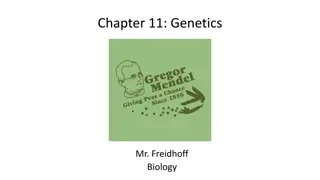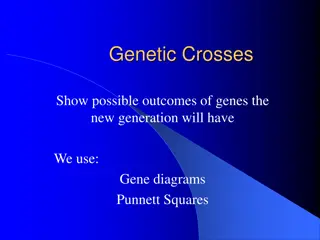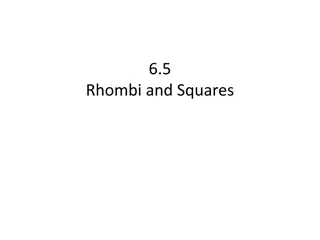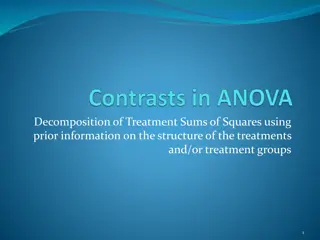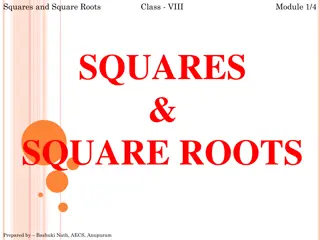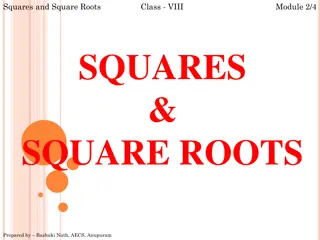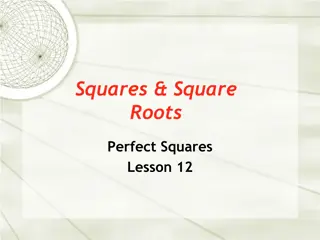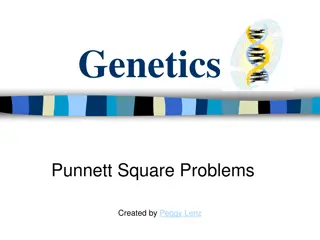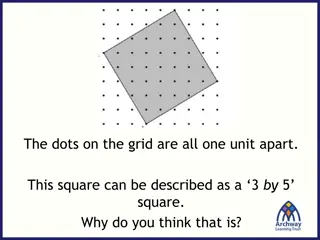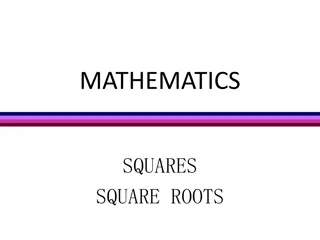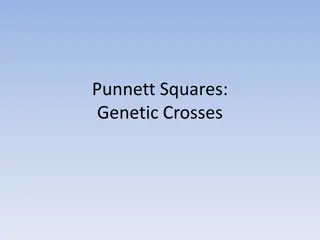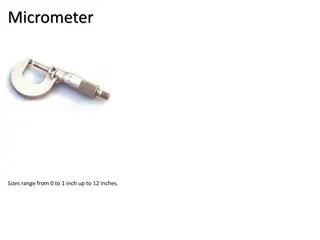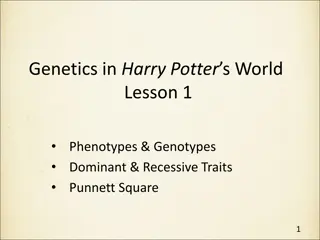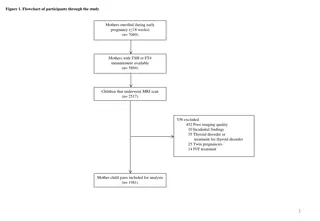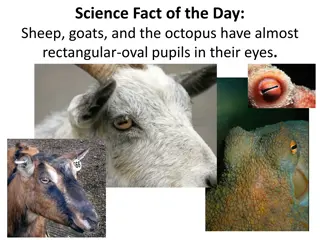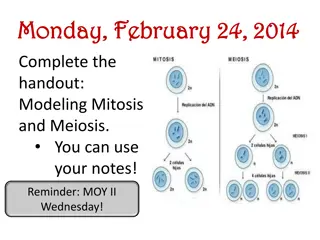Understanding Punnett Squares for Predicting Offspring Genotypes
Punnett squares are a visual tool used to predict the possible genotypes and phenotypes of offspring based on the parent's genetic makeup. By following simple steps and understanding dominant and recessive traits, you can calculate the likelihood of different genetic outcomes for traits like hair color, flower color, and more.
Uploaded on Sep 12, 2024 | 0 Views
Download Presentation

Please find below an Image/Link to download the presentation.
The content on the website is provided AS IS for your information and personal use only. It may not be sold, licensed, or shared on other websites without obtaining consent from the author. Download presentation by click this link. If you encounter any issues during the download, it is possible that the publisher has removed the file from their server.
E N D
Presentation Transcript
Method used to calculate the probable offspring genotypes Steps to creating Punnett Squares: 1. Get the parent s genotypes Ex: ZZ, Zz, zz z z Z Z Z z z 2. Draw a Punnett Square 3. Put the parent s genotypes on the Z Z Z z z top and the left side 4. Drop the alleles down from the top 5. Slide the alleles over from the left side 6. Each box is worth 25%
Punnett Example: Father Genotype: Aa Mother Genotype: AA Possible Genotypes: 50% AA 50% Aa Possible Phenotypes: 100% Dominant Trait
Punnett Example: Tongue curling is a dominant trait: Dominant allele = C Recessive allele = c Homozygous dominant = ______ Homozygous recessive = ______ Heterozygous = ______ People heterozygous for tongue curling can curl their tongue. A homozygous recessive mom for tongue curling and a heterozygous father want to know if their children will be able to curl their tongues. Calculate the genotype and phenotype percentages for the offspring. T / F
Punnett Example: Brown hair is dominant over blonde hair: Dominant allele = B Recessive allele = b Homozygous dominant = ______ Homozygous recessive = ______ Heterozygous = ______ Genotypes: Phenotypes:
Punnett Example: Purple flowers are dominant over white flowers Dominant allele = P Recessive allele = p Homozygous dominant = ______ Homozygous recessive = ______ Heterozygous = ______ Genotypes: Phenotypes:
Punnett Example: Round flowers is dominant over pointed flowers Dominant allele = R Recessive allele = r Homozygous dominant = ______ Homozygous recessive = ______ Heterozygous = ______ Genotypes: Phenotypes:
Punnett Example: Smooth corn kernels are dominant over wrinkled Dominant allele = S Recessive allele = s Homozygous dominant = ______ Homozygous recessive = ______ Heterozygous = ______ Genotypes: Phenotypes:


